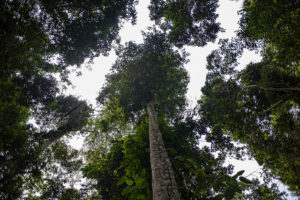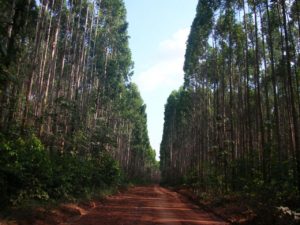
The Tropical managed Forests Observatory (TmFO) was recently formalized by a collaboration agreement signed by 18 institutions, including Agricultural Research for Development (CIRAD).
The confirmation of this unique network will enable it to continue monitoring the world’s logged tropical forests and drafting recommendations for sustainable silviculture. This is a crucial challenge in the light of biodiversity erosion and climate change.
Some 75 percent of the world’s tropical forests have been disrupted by human activity. It is vital to understand the ecology and resilience of these managed ecosystems in order to determine their future role in mitigating global warming and conserving biodiversity in the territories concerned. The TmFO network is the only organization working on logged tropical forests, as the other existing structures (Rainfor and CTFS) are limited to so-called primary forest.
“The network, which is now official, will benefit from greater visibility,” said the CIRAD researcher coordinating the network, Plinio Sist, also of the CGIAR Research Program on Forests, Trees and Agroforestry (FTA). “What we have to do now is to sustain it by developing projects.”
Read more: Tropical Production Forests Observatory
Fine-tuning recommendations concerning sustainable silviculture
TmFO has existed informally since 2012. At the time, CIRAD decided to use funding from FTA to federate several experimental sites on three continents (in Amazonia, the Congo Basin and Southeast Asia). Those sites are monitoring forest dynamics after logging and silviculture. Some have existed for more than 30 years, such as Paracou (French Guiana), Mbaiki (Central African Republic) and Tapajos in the Brazilian Amazon.

“The aim is to have a regional and pantropical picture of the resilience of these forests,” Sist explained. In effect, “the forests of the northeastern Amazon do not react to logging in the same way as others in the South of the forest basin. The observatory’s data are placed within a regional context, and are thus more useful for adapting sustainable silviculture recommendations.”
Exceptional opportunity to study forest resilience
The TmFO network has already enabled a degree of progress. For instance, it has demonstrated that Amazon forests recover their carbon stock in 20 years. This result shows that sustainably logged forests play a fundamental role in C02 capture, hence in mitigating climate change.
Read more: Diversity, commitment, challenges and shared goals: How CIRAD looks at FTA
The general agreement specifies four main structures: a steering committee, in which each of the 18 member institutions will be represented by a member, and three regional technical committees, for Amazonia, the Congo Basin and Southeast Asia. CIRAD is coordinator for the next two years.
The TmFO network in figures:
- 22 experimental sites encompassing 517 forest plots covering a total of 1134 ha
- 18 forestry research institutions are monitoring those sites, all of which have signed the agreement
- 9 countries are home to those sites: Bolivia, Brazil, Guyana, France (French Guiana), Surinam, Central African Republic, Gabon, Malaysia and Indonesia
- 40 researchers are involved in the network.
Originally published on CIRAD.fr.
This work forms part of the CGIAR Research Program on Forests, Trees and Agroforestry (FTA), which is supported by CGIAR Fund Donors.











